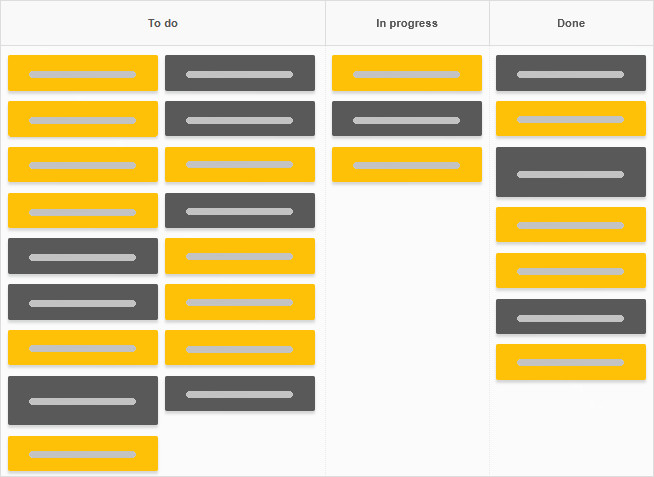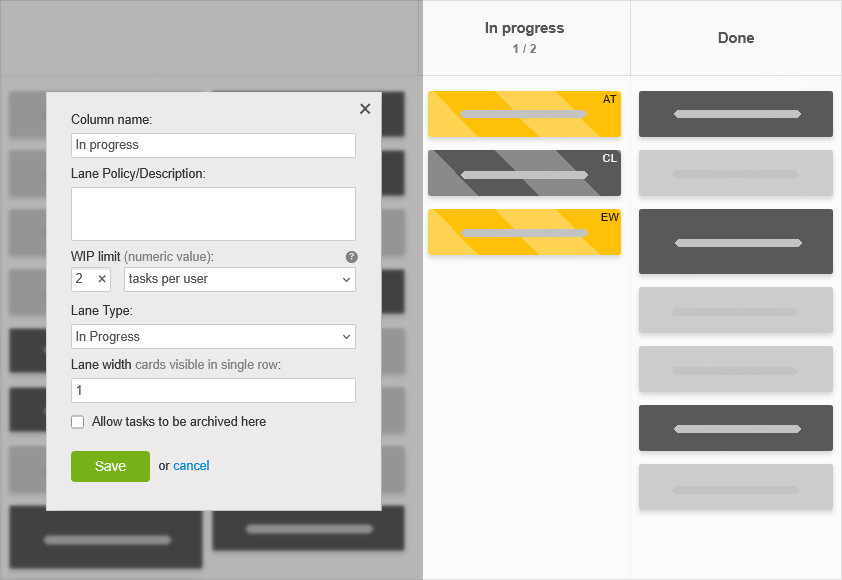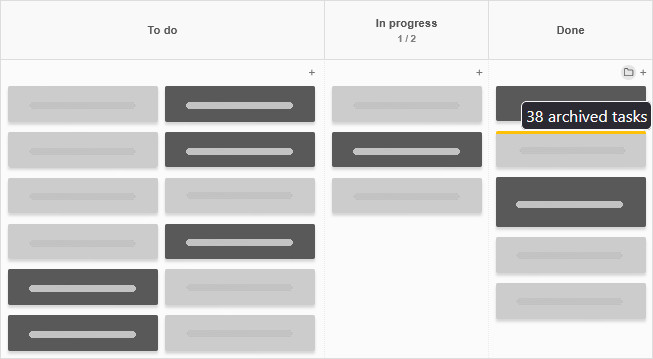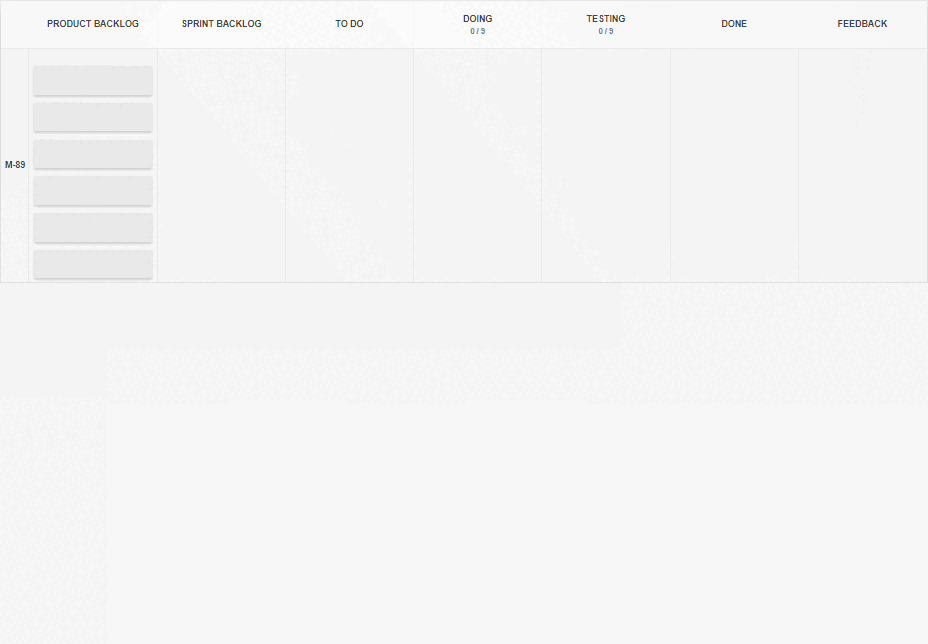Blog
The Kanban Minimalist—Stripping Kanban Down to Its Essentials11 Feb 2025

It could be argued that Kanban is the ultimate tool for visualizing work, streamlining processes, and boosting efficiency. But often, somewhere along the way, teams fall into the trap of over-complicating their Kanban systems—cramming in unnecessary columns, excessive work-in-progress limits, and redundant automation. What had started as a simple, elegant workflow becomes an unwieldy mess.
If your Kanban board feels like it’s working against you rather than for you, it may be time to strip things back to the essentials. Let’s explore how to embrace Kanban's core principles without unnecessary clutter.
1. Start with the absolute minimum
Kanban, at its core, is about visualizing work and limiting WIP. A basic Kanban board consists of three primary columns: To Do, In Progress, and Done.
Start here if you’re new to Kanban or feel overwhelmed with your current workflow. Add more complexity only when necessary and exclusively when it solves a particular problem.

2. Question every column
Teams tend to create excessive columns such as Analysis, Testing, Approval, or Waiting on Feedback, leading to sluggish workflows. Before you create an extra column, ask:
- Does the step require an exclusive column, or is it a mere state change within In Progress?
- Does the column add clarity, or does it create the potential for unnecessary bottlenecks?
- Could the new stage not be represented with a simple tag or card color change instead?
By challenging the necessity of new columns, you ensure that the process board remains lean and efficient.
3. Limit WIP—but don’t obsess over it
Work in progress (WIP) limits are powerful tools to prevent task overload. However, many teams get bogged down in setting rigid limits that don’t reflect reality. Instead of over-engineering the constraints, start with a basic rule:
- Limit the number of tasks per team member to a reasonable number, e.g., no more than two active tasks at a time.
- Adjust limits dynamically - as and when you observe bottlenecks - rather than forcing arbitrary constraints.

4. Ditch the automation (for now)
Automation can be a lifesaver, but too much of it can create a convoluted system, difficult to troubleshoot, explain, and trust. Before you start automating your process, ensure:
- It genuinely reduces manual effort.
- It doesn’t create hidden complexity.
- It’s easy to modify or remove if needed.
When in doubt, keep things manual until the pain point in your workflow becomes undeniable.
5. Keep policies simple and open to change
Over-documenting policies on, e.g., when and how to move tasks, while helpful in specific contexts, can lead to unnecessary bureaucracy. Instead, stick to a few simple guidelines along these lines:
- Tasks should move as soon as meaningful progress happens.
- Everyone is responsible for keeping the board up to date.
- Daily stand-ups (if needed!) should focus on blockers and difficulties, not status updates and summaries.
6. Regularly purge the clutter
Like any work management system, Kanban boards accumulate clutter over time. Make it a habit for your team to:
- Archive completed tasks instead of letting them pile up.
- Remove columns, labels, or task categories when you realize they've become unnecessary.
- Regularly review whether your workflow still serves its purpose.

7. Focus on flow, not features
The goal of using Kanban is not to make fancy boards, relying on advanced widgets, or endless metrics analysis. What it is about is getting work done efficiently. Keep your team's focus on:
- Ensuring tasks flow smoothly from start to finish.
- Reducing unnecessary hand-offs, approvals, and other delays.
- Improving collaboration and visibility.

In summary: Less is more!
Hands down, the best Kanban system is the one that helps you work, not the one with the most bells and whistles.
Keeping things simple, questioning complexity, and always focusing on flow, will allow you to create a work hub that strongly supports your team’s productivity. Step back, declutter your board, and get back to what Kanban is really about: doing great work, with ease and efficiency.
Sign up for a 14-day free trial
to test all the features.
Sign up now and see how we can help
your organization deliver exceptional results.